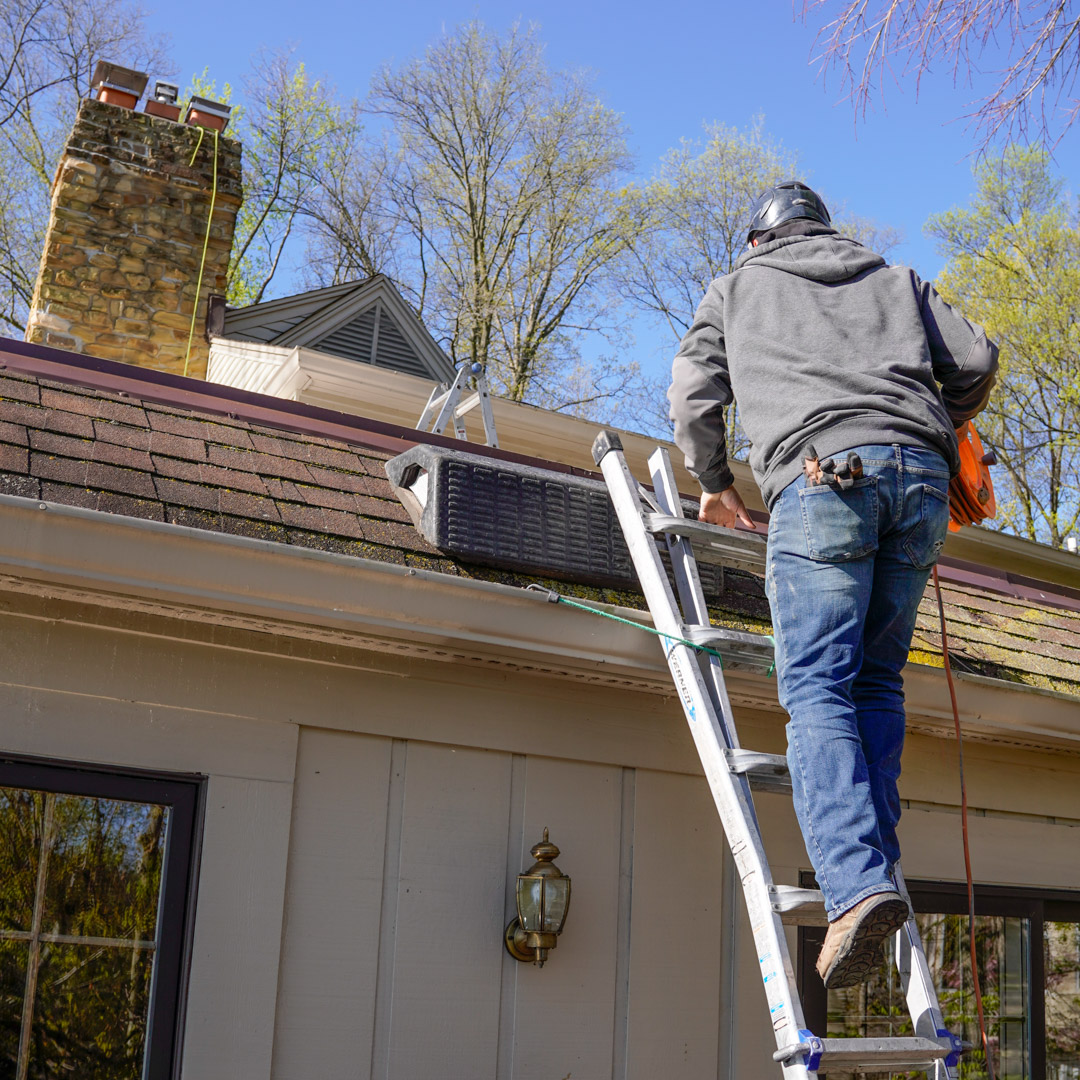Is Your Chimney Leaning?
Picture this: You’re mowing the yard and look up at your chimney and think, “Is this an optical illusion, or is my chimney leaning?” If it’s the former, it’s no big deal. Maybe you just need to update your glasses prescription. However, if it’s the latter, it could be big trouble. Chimneys lean for various reasons, and in this blog post, we explain why this happens, how dangerous the situation is, and what you can do about it.
 What Causes a Leaning Chimney?
What Causes a Leaning Chimney?
Several factors contribute to the chimney leaning, the most common of which are foundation issues. Here’s a closer look at the most common causes.
Foundation Problems
The most frequent cause of chimney leaning is shifting or foundation settling. If the soil beneath the foundation is unstable, it can cause one side of the chimney to sink, resulting in tilt. Factors like soil composition, moisture content, and improper drainage can worsen these conditions.
Poor Construction
In some cases, maybe the chimney wasn’t constructed correctly at the beginning, making it structurally unsound. A poorly built foundation, inadequate materials, or lack of reinforcement can lead to the chimney leaning over time.
Erosion and Water Damage
Water is one of the most destructive forces on brick-and-mortar structures. If water seeps into the foundation or the chimney itself, it can erode the materials, weaken the structure, and cause it to lean. This is especially common in regions with heavy rainfall or where gutters and downspouts aren’t properly directing water away from the foundation.
Tree Roots and Vegetation
Large trees or invasive plant roots near the chimney can exert pressure on the foundation. As roots grow and expand, they can displace the soil around the foundation, leading to a shift that causes the chimney to lean.
Seismic Activity
Even minor seismic activity can impact the chimney’s structural integrity in areas prone to earthquakes, especially if other factors have compromised it. Repeated small tremors can gradually weaken the foundation or masonry, leading to a tilt.
How Dangerous is a Leaning Chimney?
A leaning chimney is more than just an eyesore; it poses several dangers.
Collapse Risk
The most immediate danger of a leaning chimney is the risk of collapse. As the tilt becomes worse, the chimney’s structural integrity weakens, increasing the likelihood that it could fall over. A collapsing chimney can cause significant damage to your roof and potentially injure someone.

Fire Hazard
A poorly aligned chimney can create gaps between it and the house, allowing heat, smoke, and even flames to escape into areas they shouldn’t, which can lead to fires.
Carbon Monoxide Leaks
If the chimney is leaning and the structure is compromised, it may not effectively vent smoke and harmful gases like carbon monoxide out of the house. Carbon monoxide is dubbed the silent killer because it’s colorless and odorless, and most people don’t know there’s a problem until it’s too late.
Structural Damage
As the chimney leans, it can pull away from the house, damaging the roof, and interior structure. This can lead to costly repairs.
Preventing and Fixing a Leaning Chimney
Addressing a leaning chimney promptly can prevent further damage and mitigate risks. Here are some preventative measures and repair options to consider.
Proper Drainage
Ensure your home’s gutters and downspouts are functioning correctly and directing water away from the foundation. If water pools around the house, consider installing a French drain or other drainage solution.
Regular Inspections
Periodic inspections by a trained chimney professional are the most important things you can do to ensure your chimney’s health and safety. The inspector will look for signs of leaning, cracks, deteriorating mortar, and gaps between the chimney and the house. Early detection is key to preventing more expensive repairs and severe damage down the road.
Chimney Reinforcement
In some cases, the chimney may need to be reinforced. This could involve rebuilding parts of the chimney, adding steel braces, or installing a new foundation specifically for the chimney.
Foundation Repair
As mentioned, foundation issues are the root cause of most instances of leaning chimneys. If that’s your case, solutions could include underpinning the foundation to stabilize it or using helical piers to provide additional support.
Tree and Vegetation Management
If tree roots or large plants contribute to the problem, you may need to trim or remove them. Consider calling a professional landscaper or arborist to help manage the vegetation and prevent further damage.
Seismic Retrofitting
Finally, if you live in an area prone to earthquakes, consider seismic retrofitting for your chimney. This process involves reinforcing the chimney to withstand seismic activity, reducing the risk of damage or collapse.

Call Chimney Solutions
If your chimney is leaning or you’ve noticed cracked bricks or deteriorating mortar joints, call the professionals at Chimney Solutions. We’re Indiana’s go-to chimney and fireplace company with over 20 years of experience. Our technicians are highly trained and certified, so you can trust our work to be accurate. Whether you need chimney sweeping, repairs, maintenance, inspection, or anything else, we’re your one-stop shop. Call us in Indiana at (317) 757-6979.




